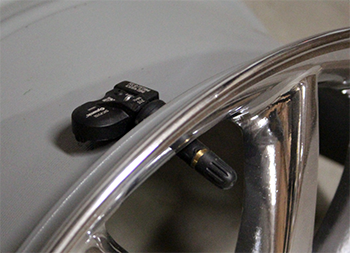A Tire Pressure Monitoring System (TPMS) routinely checking tire pressure levels in all tires on a vehicle. The type of TPMS (Direct TPMS or Indirect TPMS) determines the mechanics of how we monitor tire pressure levels.
With an Indirect TPMS, all tire pressure monitoring data is estimated using the ABS (Anti-Lock Brake System) to approximate tire pressure. This is a disadvantage, as an Indirect TPMS often fails to provide accurate tire pressure information when it's needed most. Ironically, the proper functioning of an Indirect TPMS is largely dependent on proper tire inflation, which essentially defeats the purpose of a TPMS. Even more concerning is an Indirect TPMS is unable to read tire pressure status on a tire-by-tire basis, so the system may fail to warn drivers when all four tires are equally under-inflated or equally overinflated.
Alternately, a Direct TPMS provides highly accurate tire pressure monitoring results, using tire pressure sensors mounted on each wheel. The tire pressure sensors used by a Direct TPMS collect tire pressure data from the tire valves on each tire, reporting tire pressure information to the driver in near real-time.
Consumers prefer Direct TPMS because of their reliability and convenience since Indirect TPMS requires manual resets of the system. What’s more, car owners with an Indirect TPMS must also manually recalibrate the system when they add air to the tires in their vehicle. For these reasons, Direct TPMS is the most popular type of tire monitoring solution on the marketplace today.
